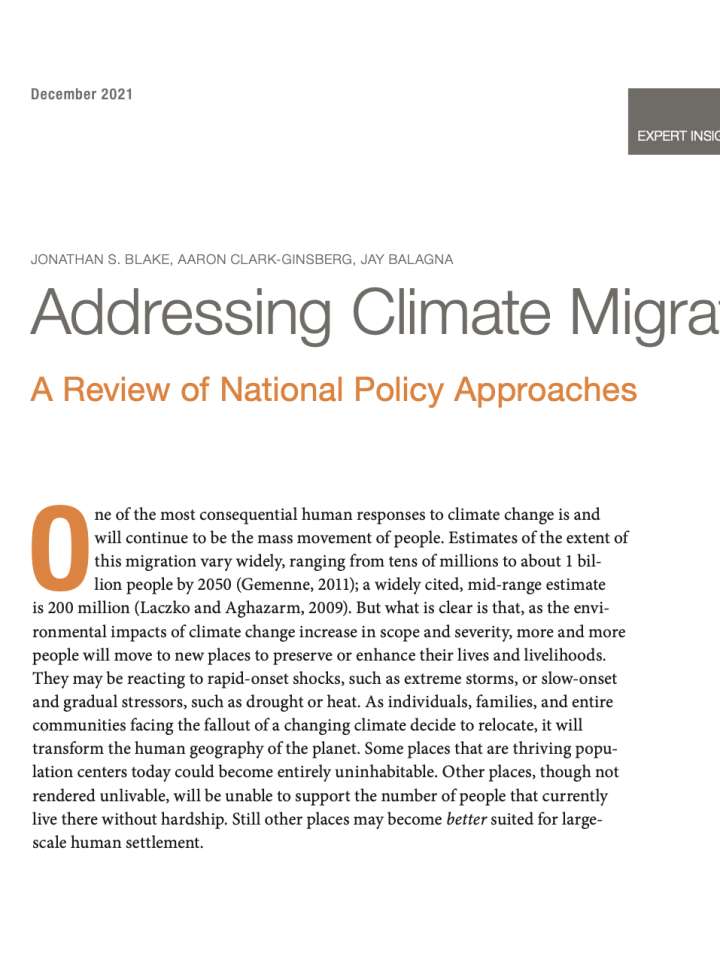Addressing climate migration: A review of national policy approaches
In this paper, RAND researchers provide a framework for understanding how nation-states are developing policies to respond to climate migration and mobility. They review related policies in six countries: Bangladesh, Kiribati, Kenya, Norway, the United States, and Vanuatu. Each country has different means and faces different climate mobility pressures. By evaluating these case studies, the authors identify a variety of policies and programs that governments are undertaking to prepare for, enable, channel, assist, or prevent the climate-induced human movement that is already ongoing in some places and is expected to increase significantly in both number and geographic scope in the coming decades. They use this analysis to identify the reasons that states pursue climate mobility policies, and they identify categories of policy responses that countries are enacting. These findings can provide policymakers with high-level options when considering the broad needs of climate migrants and their host communities and when designing their own policies.
Some of the key insights include:
- Climate change is contributing to human mobility. But because migration stems from a combination of factors, estimates of how many people will be displaced because of environmental changes by 2050 vary widely, from 25 million to about 1 billion.
- Most climate migration happens within rather than across national borders. The nation-state will be the primary entity man- aging climate migration and therefore will bear the most responsibility for policymaking, but multilateral organizations could play a larger role in transnational climate migration policy.
- This projected surge in migration could result in positive or negative outcomes for migrants and their host communities and countries. Government policies related to housing, jobs, health care, and other issues will play a large role in determining these outcomes.
- We established a definition of climate mobility from the existing literature and used insights from that literature to define climate mobility policy, which has lacked a widely accepted meaning.
- The reasons that states enact climate mobility policies fall into five categories: security and rule of law, rights, development, preservation of customs and cultures, and resilience. These reasons can reinforce each other but can also lead to conflict- ing policies. We refer to these five categories as policy frames.
Explore further
